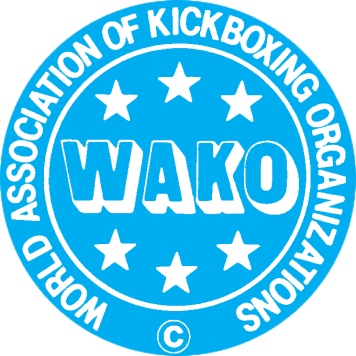The Alitalia Boeing circled at length above Shanghai before receiving permission to land from the control tower. I had heard that the airport was huge and very busy. Shanghai has always been a forward-looking city, a Chinese outpost towards the future. I knew that it is an enormous metropolis and full of skyscrapers, worse than Manhattan. From the air I tried to verify my preconceptions, but of the new China unfolding below me I could only see rectangular fields of different colors, like a puzzle perfectly put together. As the plane descended, my mind drifted back to my youth when I knew little or nothing about Mao Tse Tung’s Red China. Sure, I had read about his life, his revolution and his attempt to create a new society, but no one really knew anything about China in those days. It was impenetrable. During student demonstrations I would often see many waving copies of Mao’s “ Little Red Book ” which I would soon find on sale at Tien An Men Square. Obviously, when the doors of the plane opened I felt strong emotions &rdash I was finally in Red China where I had never been before. It was another experience to add to my numerous globe-trotting adventures.
The airport was indeed huge, but I found it to be highly rational and functional. Even though the structure is enormous, with broad arches that look like moving waves, the fact that it is made of tubular steel and glass give it an impression of lightness. The transfer to the terminal, document control and baggage claim were all accomplished without delay. The efficiency in this country is quite visible. I had the good fortune to have someone waiting for me upon my arrival. It was one of my vice-presidents (of WAKO, obviously) who is an executive of a Canadian multinational company that produces automobile components and has a large factory in Shanghai.
Having a driver and guide is important for better enjoyment and appreciation on a short visit like mine (just one week, not nearly enough for this enormous country). I wouldn’t even think of doing it without them. I had very little time and tried to select the things to see and do.
The boulevards we crossed on our way to the city center were broad, tree-lined and well kept. The streets were spotless, well lit and full of cars, obviously. 17 million inhabitants is no laughing matter. After a couple of days here, Milan’s infernal traffic will seem like nothing in camparison. The cars are almost all Volkswagens or Japanese brands. I had the pleasure of seeing a yellow Lamborghini in Beijing but no others Italian cars.
Looking around I see enormous buildings, not necessarily skyscrapers. Many buildings have numerous small windows and no balconies. They are probably small apartments, but are well made. The famous skyscrapers of Shanghai are full of light and neon signs. They come in all shapes and sizes with one peculiar characteristic: at the top they have some type of crown, temple columns, even the facade of a Victorian house, which serves no purpose other than decoration.
Even the most distracted visitor will notice the “ haze ” that surrounds the buildings. I asked our guide if they usually have fog this time of year. He smiled and answered, “ it isn’t fog. It’s the air we breathe in this city. It’s smog, caused by all the factories around the city. ”
Nice stuff. Therefore, China, a predominantly agricultural country throughout its history, producer of silk and spices, has discovered industrialization. I asked how such a thing came about… or why did the authorities, who must have known about all the problems associated with industrialization, let the big multimationals make such a big mess? The answer was that it all has happened within the past seven years, when the central leadership decided to make a fundamental change of direction for the future of China: the opening to the laws of the free market economy and to the West. To attract them the Chinese government granted them huge tax benefits for at least 5 years. In fact, they pay little or no taxes. Obviously, the multinationals jumped at the opportunity, but what a disaster!! 70% of the water is seriously contaminated and even the deep acquifers are affected and marine life is threatened. Unless the Chinese government changes course and applies severe penalties on those who devastate the environment, I think China (and the rest of the world) will create an ecological disaster of biblical proportions.
The next day, after tossing and turning all night (jet lag is much worse when you fly toward the east), I was off to dive into the city’s traffic to discover… a sea of false copies. As soon as you stick your nose out the door of your hotel you are surrounded by men and women who want to sell you everything under the sun. “ Do you want to buy a Rolex, Cartier, Vacheron Constantin, Montblanc? ” However, unlike in Arab countries where they insist without end and stick to you like flies, when you repeat that you don’t want to buy three times they will leave you in peace.
I am on Nachino Road, the most “ in ” street in Shanghai, comparable to Via Montenapoleone in Milan or Via Condotti in Rome. Here you find the shops of the all the most famous luxury “ houses ” with the world’s most prestigious names. In front of the shop windows of Bulgari and Luis Vuitton, which are almost empty, there are throngs of Chinese who offer the many tourists false copies. They exist in Shanghai and in Beijing, entire neighorhoods of department stores where they sell famous names. Just imagine, a perfect imitation of a Montblanc pen for 1 Euro, a steel Rolex for 10 Euros. China is a paradise for those wishing to fill their pockets with cheap “ famous-name ” knick knacks.
The following day we decided to leave Shanghai to visit what local advertising calls “ The Little Venice of China ” . Suzhou is a town just 80 kilometers from Shanghai. It is like returning to the China of 50 years ago. It’s a good trip to take because it shows, in case you haven’t already understood, that Shanghai is an abnornal projection of what China could become in the future, but the real China is still Suzhou. This is a China of low-rise, inexpensive houses, one right next to the other, of streets full of farmers and fishermen, of faces very different from those we saw in Shanghai. There are tiny shops where they produce combs made of bone, painted vials and necklaces, and where they sell rice pendants, your name written in Chinese on parchment, little paintings, small wooden boxes, fans and little animals in cages. These shops are full of people waiting for a tourist to place a curious glance, maybe tempted to buy something. These are patient people who spend a good part of the lives waiting.
The Little Venice of China is really not much compared to the real thing in Italy. Sorry guys. Even the local gondolas are quite different and the water is even darker and more foul-smelling than in Venice.
As I leave Shanghai for Beijing I am a bit perplexed and sum up my thoughts in one simple question: whatever happened to the dreams of the revolutionary Chinese from the times of the Long March? They wanted to create a new society, a new type of man. What is new about these new Chinese?
Today’s China already has all the problems that advanced capitalist societies have encountered, but here they remain unsolved. In short, I believe “ one man exploiting another ” continues to exist.
The flight to the capital only takes about an hour and a half. Beijing is architecturally less beautiful than Shanghai, less impressive and opulent, but in and around Beijing lies the history of China during the past 2000 years.
The Great Wall is incredible, to say the least. Imagine an enormous construction, not so much for its height, but for its length &rdash it was 10,000 kilometers long and 7000 remain today. Its construction was begun by a Chinese emperor who lived 200 years before Christ and who feared the barbarian hordes that constantly invaded his land from what is now Mongolia. It is a far cry from Hadrian’s Wall, built by the Romans in the north of England to keep out the brash and violent Scots. The Great Wall is truly great and imposing, an undertaking that certainly must have cost the life of thousands of prisoners (the term they use &rdash they were actually the slaves of those times) during its hundreds of years under construction. The Great Wall would later become absolutely useless because enemies much more powerful than the Mongols came from the sea instead of from the mountains. But as it is, the Wall is a fascinating and everlasting achievement from the glorious past.
While you can go to visit the Great Wall in little more than an hour by car, Beijing itself offers another historical wonder, the Forbidden City, in which the famous director Bertolucci filmed “ The Last Emperor ” . When you enter this huge citadel (it covers 750 thousand hectares of land) you can imagine the court, the magnificence and the power that the Emperors had. Perhaps the Forbidden City, where no one could enter without authorization, and which the Emperors had built for their protection, actually created over time the chasm, the total detachment that existed between the central power and surrounding reality which would eventually lead to the fall of the empire.
Just outside the Forbidden City is the enormous Tien An Men Square, famous the world over for the outrageous repression of students. On June 4, fifteen years ago, the communist Chinese government ordered their tanks to open fire on the students who were gathered in protest in the square. It was here, and only here, that I saw the huge mural of the Great Leader on the wall of a gigantic building. It was the only time I saw an image of Mao Tse Tung during my entire visit. In the square they sell as a souvenir his little red book of quotations which I had so often seen making the rounds during my university days. In China, he is now only a vague memory.
After completing my sightseeing schedule I went to work.. I came to China along with two of my vice-presidents – Richard Leyrer, president of the Hungarian Kickboxing Federation and Espen Lund from Norway – because GAISF had called its yearly General Assembly in Beijing. As the president of a new International Sports Federation (WAKO gained recognition in 2006) we partecipated in the assembly meetings which were held last April 27. In that hall the leaders of world sports were present. Besides the presidents from all the International Federations (amongst them many Italians, from Bruno Grandi for Gymnastics to Ricci Bitti for Tennis, Sabatino Aracu for Skating and General Gola for Military Sports, plus many more like Mario Pescante) there were also the International Olympic Committee’s top officials. Having been admitted only few months ago, we felt as if we were living an impossible dream, but it was real and we were there in the middle of that distinguished assembly. We had made it.
GAISF’s budget was approved and then we elected the president, Mr. Hein Verbruggen (former president of ICU-biking and a friend of Jan Rogge, the IOC president) and our schedule also included a martial arts session. Beijing held the second appointment of all the federations belonging to the World Martial Arts Games (MAG), the future real Olympics of Martial Arts. Among the news is the fact that the International Judo Federation seems to be interested in the event and the World Karate Federation President, Antonio Espinos from Spain, is now a member of the GAISF Board of Directors along with the Sweden’s Paul Hoglund, President of the International Ju Jitsu Federation.
Apparently there’s a strong feeling that Martial Arts are gaining some high ground. The third MAG Organizing Committee meeting will be held in Bangkok next December 5.
Once the Martial Arts Games are defined as to their duration, the number of athletes, the organizational rules and duties of the host cities, the expenses, etc we will be able to choose the host city from among those who have already declared their candidacy.
One can only surmise that the MAG’s first edition, hopefully set for 2010, the bid will be won by a Chinese town. Not only will China host the 2008 Olympic Games (I saw some of the splendid venues) but it will also host the Formula 1 circuit, the motorcycle GP, golf tournaments with the best international champions (Tiger Woods has already designed 2 courses there and 10 more are in the works) and the finals of the Tennis Master Series. In conclusion, wealthy China is becoming a super industrial power and wants to excel in sports as well. There is little doubt they will succeed, but I can only give you a sketchy idea of the price to pay for this drive to become real.




